#Jean Tulard
Explore tagged Tumblr posts
Text

Baldassare Calamai, Allegoria di Napoleone a Sant'Elena con la Fama che vince la Morte, post 1821
Location: Rome, Museo Napoleonico
Source: Jean Tulard, L’Histoire de Napoléon par la peinture
#my pics#Baldassare Calamai#Museo Napoleonico#Jean Tulard#Tulard#L’Histoire de Napoléon par la peinture#art#Napoleon#napoleon bonaparte#napoleonic era#napoleonic#first french empire#french empire#19th century#history
81 notes
·
View notes
Text
During the night of September 9 to 10, 1796: The Affair of the Grenelle Camp

Attaque du camp de Grenelle par des conspirateurs : le 24 Fructidor, An 4.eme de la République. Paris, BnF, département des estampes et de la photographie, 1802.
Hundreds of people, including a number of Babouvists, headed towards the Grenelle camp to try to incite the garrison to revolt. It didn’t work, and they were killed. The survivors and others identified as Babouvists would later be judged by a military commission, which, according to historian Jean-Marc Schiappa, appeared quite illegal, and whose judgments would eventually be overturned.
Here is a text excerpt from Schiappa: "Unlike the events of Prairial Year III, Vendémiaire Year IV, or the mutiny of the Police Legion, no real threat (in the military sense) existed here. Military means were used to crush a political opposition that had demonstrated it was disarmed. This is a form of coup d'état, the first in a long series under the Directory."
The most famous people executed were General Maximilien Henri Nicolas Jacob and three former convention members: Claude Javogues (apparently shot while singing the Marseillaise), Joseph-Marie Cusset (one of the last ‘Crêtois’), and Marc-Antoine Huguet. Among those sentenced to death were the former mayor Antoine-Marie Bertrand (despite several favorable testimonies on his behalf, apparently) and the painter Jean-Nicolas-Victor Gagnant. In total, around 30 people were executed by firing squad.
Here is an excerpt from historian Jean Tulard: "The Affair of the Grenelle Camp is the decisive episode of the Conspiracy of the Equals, led by Gracchus Babeuf. This former feudalist, who dreamed of an agrarian communism, was preparing a plot in collaboration with former Montagnards. After the failure of the Germinal and Prairial uprisings of Year III (April 1 and May 20, 1795), it was necessary to abandon the idea of a popular uprising because the suburbs were disarmed. The Babouvists, who had made contacts within a force responsible for maintaining order in Paris—the Police Legion—hoped for a military uprising in the Grenelle camp against the Directory. The denunciation by Grisel, an officer involved in the conspiracy, allowed the Minister of Police, Cochon de Lapparent, to orchestrate a massive crackdown on the 21st of Floréal Year IV (May 10, 1796). Babeuf and his key accomplices were arrested. The last supporters of the Equals tried, during the night of 23 to 24 Fructidor (September 9-10), to incite the soldiers of the Grenelle camp to revolt. Carnot, a member of the Directory at the time, and Cochon de Lapparent allowed the insurrection to develop before deploying the cavalry. Several people were killed on the spot, and thirty were executed. Babouvism was crushed. Its missteps, especially in the Grenelle affair where it was manipulated by provocateurs, were harshly criticized by Marx."
I will conclude with a quote from Jean-Marc Schiappa: "The coup at Grenelle is measurable: the Directory developed a taste for the army, and the sword that Sieyès would seek in Brumaire had already struck," and he adds, "the episode at Grenelle is also a turning point in the history of the Directory"
P.S: What I find in Gallica Trial of twenty-five individuals from the Grenelle Camp affair but it is in french sorry :( https://gallica.bnf.fr/ark:/12148/bpt6k41290c/f4.item
23 notes
·
View notes
Text
Books about Napoleonic era (and Polish history) - 3
Good day, dear all, and let me share with you some books I've read recently.
And because today is the birthday of Tadeusz Kościuszko I'll start with a biography of him The Peasant Prince, by the American historian Alex Storozynski:

2. One more position about the Polish history, in English, I'd like to recommend you is Richard Butterwick's The Polish-Lithuanian Commonwealth, 1733–1795: Light and Flame, dedicated to the reigns of Polish-Lithuanian two last kings, Augustus III Wettin and Stanisław August Poniatowski:
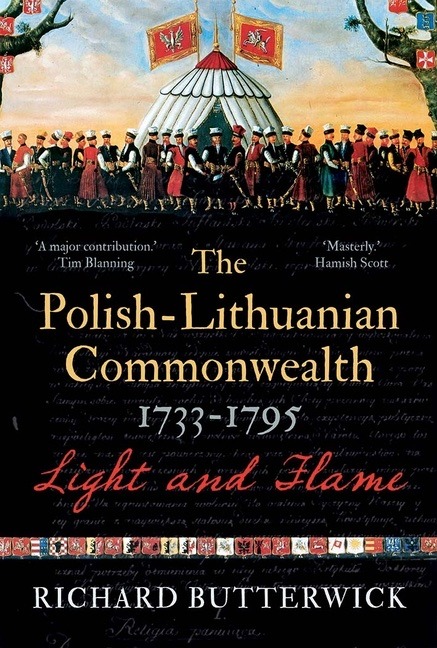
From the topic of Polish history let's switch to the French one.
3. One more addition to my collection of Talleyrand's biographies was this one, written by Robin Harris:

4-5. Then, there were two books about Napoleon's private life, by Octave Aubry and Sigrid-Maria Größing:
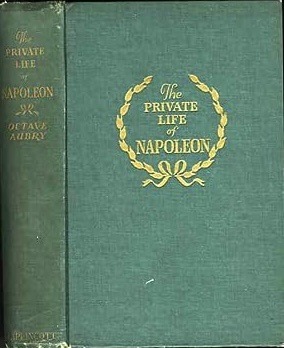

6-7. A study on the topic of French revolutionary and imperial generals, by Georges Six, and George Nafziger's Imperial Bayonets. (These were books with lots of military details, so I can't say I've enjoyed them thoroughly, rather not belonging to their target audience))
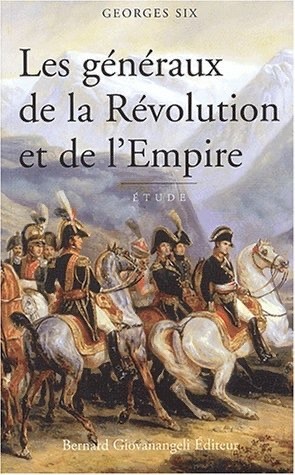

8. And this is a book I really liked, The anatomy of Glory by Henry Lachouque! And though its subtitle (Napoleon and his Guards) kinda states the book will be focused on the Imperial Guards, in fact its topics turned out much more wider, including information on Napoleon himself, France and even some details of the usual life of that times:

9. The book majority of you have already read, The Iron Marshal, a biography of Louis Nicolas Davout by John Gallaher:

10-11. And the last but not the least - two books on Murat. The first is a book by the French historian Jean Tulard and the second is an impressive work of Sarah Hammel @joachimnapoleon.


Thanks a lot, Sarah, for letting as see Joachim Murat through his letters, from his own point of view!
#books#napoleonic era#history books#kościuszko#tadeusz kościuszko#Alex Storozynski#Polish-Lithuanian Commonwealth#Richard Butterwick#Talleyrand#charles maurice de talleyrand périgord#Robin Harris#napoleon#napoleon bonaparte#Octave Aubry#Sigrid-Maria Größing#Georges Six#George Nafziger#Henry Lachouque#Louis Nicolas Davout#John Gallaher#joachim murat#jean tulard#Sarah Hammel
45 notes
·
View notes
Text
Maréchaux d'Empire: La gloire pour destin
Quelle horreur!
On the other hand, this book will keep me alternating between guffaws and serious eye-rolls for days.
The "replacement" for David Chandler's anthology, Napoleon's Marshals, published in 1987 with each of the 26 mini-bios written by for-real scholars [and not just Americans, either] is this November 2023 anthology edited by Francois Houdecek, who holds forth at the Sorbonne, claims to be a "disciple" of Jean Tulard [I believe M. Tulard has thousands of those!], and is involved in all sorts of activities and scribblings involving Naps. He is also responsible for gathering and organizing vast quantities of Napoleon's correspondence, so kudos for that.
However--and oh, my! what a huge "however" this is!--the 26 contributors range from the marginally average Pierre Branda to the apparent dregs of French scholarship whose names have never resonated outside the borders of Gallica. Each of these articles is depressingly cardboard, flimsy with details, utterly bereft of any attempt at analysis or understanding of the individual's character, talents--or lack thereof--and other useful and expected details, even in an anthology. These contributors apparently competed to see who could write the most drivel using the fewest sources. Naturally, I went straight to the entry about Lannes, and by the time I reached the end, I had permanently dislocated my eyebrows. The "author" of this travesty is Jacques-Olivier Boudon, whose credentials, on paper, are impressive but whose knowledge of Jean-Boy is worse than passing; it is non-existent. The reason for that is based on M. Boudon's sources:
He cites Lannes’ “official dossier” in the SHD, which I copied before I left, so I know every page and every sentence in it, and I know you won’t find squat that is useful unless, of course, you care how much putting on Mozart’s Requiem cost, and who sang the tenor solo.
High on the hit parade list is Regis de Crepy’s smarmy bio of the Lovely Louise, another book I can quote endlessly. Boudon used one letter from that.
Boudon also took bits and pieces from the three more recent French biographies by Dammame, Zins, and Willette—although the latest was published in 1994—and explained what I thought about them in a previous blog.
The absolutely most hysterical “source” is the 2002 historical fiction by a lovely 93-year-old woman, Penelope Le Fers-Dupac, who lives in Lectoure and who I know [I also know the biographer Jean-Claude Dammame, but that’s another story]. This novel is called “Le Mousquetaire de Napoleon: L’autre vie du marechal Lannes.” Make of this what you will, but it is the wonderfully entertaining, hilarious, and fictional tale of Jean-Boy’s first marriage.
I am appalled that this person didn’t do justice to Jean-Boy in an anthology where he would have shone at the top in capable hands. I know who's the real expert here, and I certainly don’t mind if someone also chooses to write about My Guy. But he or she had damn well better get it right, and this French morceau de merde massacred his subject.
BTW, joachimnapoleon, have you encountered Vincent Haegele? He did Murat no favors here, either. Thanks for reading the rant. I feel better.
#jean lannes#don't bother#napoleon's marshals#truly terrible french writng#non-history#who are these idiots?
17 notes
·
View notes
Text

A trop lire Alexandre Dumas on finirait par croire que les duels se sont arrêtés au XVIIe siècle par la volonté de Richelieu et que d’Artagnan et Cyrano n’ont pas eu de postérité. Les combats les plus spectaculaires à l’épée ou au pistolet ont eu lieu à l’époque de Napoléon. Ils eurent pour cadre l’armée car la police parvint à empêcher les duels entre civils. Un mauvais regard, un mot de trop, une querelle politique suffisait. L’honneur d’un régiment était souvent le prétexte de l’affrontement, ce que rappelle fort bien – transposé dans le monde des reconstitutions de batailles napoléoniennes – Demain dès l’aube, de Denis Dercourt. On se bat aussi pour passer le temps. Il y a des spécialistes, les maîtres d’armes et les prévôts. On se bat au sabre droit de cavalerie ou au sabre courbe, plutôt qu’à l’épée, au premier sang pour les offenses légères, à mort pour les injures graves. Des règles non écrites s’établissent. Napoléon n’est pas favorable au duel, meurtrier pour ses officiers et ses meilleurs soldats. Des sanctions sont prévues dans certains règlements de service mais peu appliquées.
Jean Tulard
5 notes
·
View notes
Text
S’il fallait sélectionner quelques films éminemment français, quel serait votre palmarès ?
Arnaud Guyot-Jeannin : Je vais m’en tenir à une dizaine en précisant que la tâche est rude et que la liste est le reflet d’une grande part de subjectivité. Autant le premier film de la liste est vraiment mon préféré de toute l’histoire du cinéma – c’est d’ailleurs aussi le cas des Français d’après les sondages qui se succèdent depuis sa sortie –, autant les autres films sont classés dans le désordre.
Les Enfants du Paradis de Marcel Carné (1945) : le chef-d’œuvre des chefs-d’œuvre d’une poésie à couper le souffle.
Le Procès de Jeanne d’Arc de Robert Bresson (1962).
Ma nuit chez Maud d’Eric Rohmer (1968).
La Bête humaine de Jean Renoir (1938).
La Grande illusion de Jean Renoir (1937).
Le Doulos (1962) de Jean-Pierre Melville (mais, mon cœur balance avec Le deuxième souffle,1966 ; Le Samouraï, 1967 ; Le Cercle rouge, 1970) qui sont des films plus français qu’on ne le dit généralement. Dans son Dictionnaire du cinéma consacré aux réalisateurs, Jean Tulard résume en une formule limpide ce qui caractérise le cinéma de Melville : « Il a parfaitement assimilé la leçon des Américains, mais a su rester français ».
La 317e section de Pierre Schoendoerffer (1965).
Le Crabe Tambour de Pierre Schoendoerffer (1976).
Les Choses de la vie de Claude Sautet (1970) (mais il faudrait quasiment citer tous les films du metteur en scène).
Que la bête meure de Claude Chabrol (1969).
2 notes
·
View notes
Text
Contre-manuel d’histoire
Par Gérard Leclerc Sans doute convient-il qu’à chaque génération une nouvelle histoire de France soit proposée pour une prise de conscience d’un passé sans lequel nous ne serions pas ce que nous sommes. Michelet, Lavisse, Bainville ont été ainsi les médiateurs nécessaires de cette transmission. Philippe Delorme s’inscrit donc à leur suite, avec une autorité telle que son préfacier, Jean Tulard,…

View On WordPress
0 notes
Text

SAMEDI 13 JUILLET 2024 (Billet 1 / 3)
« LE BALZAR (*) »
Vous allez dire : « encore des photos où l’on voit les 2 rédacteurs du Blog en train de déjeuner ! » Et vous aurez raison. Mais le but principal n’est pas du tout de montrer nos bobines mais de partager l’expérience d’un restaurant et, s’il nous a plu, de vous donner peut-être l’idée d’y aller avant d’aller voir « Paris, Texas » au Champo, dans le quartier latin.
C’est après avoir fait le tour des restos du quartier, tout autour du cinéma, que nous avons choisi le « Balzar ». Pourquoi ce choix ? Nous n’avions pas envie de manger une soupe à l’oignon ou une fondue savoyarde (ou bourguignonne), des plats pour touristes que l’on trouve dans 80% des établissements devant lesquels nous sommes passés. Nous ne voulions pas non plus manger « asiatique », par contre, la terrasse du « Balzar » (45 rue des écoles, dans le 5e), ses tables dressées avec nappe et serviettes blanches et son côté « rétro-chic » nous ont plu. Le maître d’hôtel aussi.
Nous n’avons pas été déçus. Marina, qui n’avait pas très faim, a commandé une douzaine de gros escargots de Bourgogne et JM, un pied de porc, salade/frites. Nous avons terminé par un Baba au Rhum… avec 2 cuillères et là… un grand frisson : un des meilleurs Babas au Rhum que nous ayons mangé ! Et le dessert une fois servi, on vous laisse la bouteille de Rhum, la classe !
(*) Le « Balzar » a été créé aux alentours des années 1886-1888 par Amédée Balzar.
Il le revend quelques années plus tard au propriétaire de la brasserie « Lipp », Marcelin Cazes. Cazes s'entoure de l'architecte Art Déco Joseph Madeline, lequel modifie le lieu en aménageant carrelage, globes d'opaline, tables de bois brut, boiseries sombres et banquettes de moleskine. D'immenses miroirs sont apposés. Cet établissement est baptisé « Le Petit Lipp » (1931), en comparaison au véritable « Lipp » du 151, boulevard Saint-Germain (6e arrondissement).
Parmi les habitués d'après 1945 figurent les écrivains Albert Camus, Simone de Beauvoir et André Malraux. Plus tard, on pourra y croiser l'historien Jean Tulard, les hommes politiques Jacques Toubon, Václav Havel et Mário Soares. La proximité des salles de cinéma attire Louis Malle ou Johnny Depp…
La renommée du lieu n'est pas uniquement liée à la cuisine, mais à un personnel de salle entretenant « un rapport très particulier avec les clients, fait d'un mélange précieux de nonchalance, d'ironie et de gentillesse » qui lui donne son âme.
(Source : « wikipedia.org »)
__________________________
NB Lors d’une prochaine réactualisation du site « Wikipédia » on dira peut-être que 2 animateurs d’un « célèbre Blog » y ont déjeuné un jour, qui sait (🤪)…



0 notes
Text
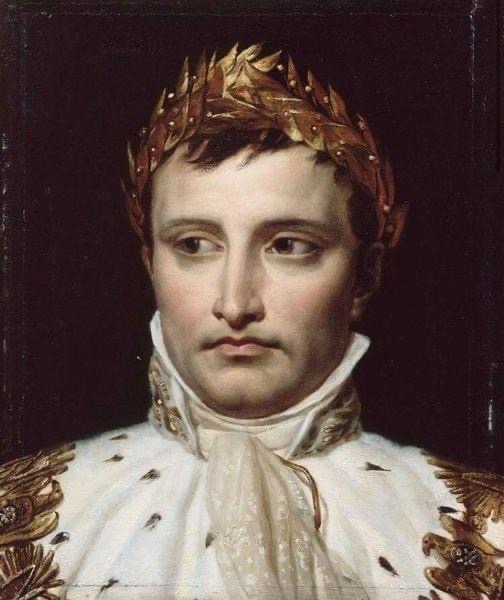
« Au commencement de ce siècle, la France était pour les nations un magnifique spectacle. Un homme la remplissait alors et la faisait si grande qu'elle remplissait l'Europe. Cet homme, sorti de l'ombre, était arrivé en peu d'années à la plus haute royauté qui jamais peut-être ait étonné l'histoire. Une révolution l'avait enfanté, un peuple l'avait choisi, un pape l'avait couronné. Chaque année, il reculait les frontières de son Empire ... Il avait effacé les Alpes comme Charlemagne et les Pyrénées comme Louis XIV ; il avait construit son État au centre de l'Europe comme une citadelle, lui donnant pour bastions et pour ouvrages avancés dix monarchies qu'il avait fait entrer à la fois dans son Empire et dans sa famille. Tout dans cet homme était démesuré et splendide. Il était au-dessus de l'Europe comme une vision extraordinaire. »
Victor Hugo, extrait de son discours à l'Académie Française, 3 juin 1841.
Illustration : Jacques Louis David (1748-1825), étude de tête pour un portrait de Napoléon en costume de sacre, 1805, RMN, Grand-Palais.
Pour aller plus loin : Jean Tulard, « Dictionnaire Napoléon », Paris, éditions Fayard, 1999.
182 ans jour pour jour, 3 juin 1841.
0 notes
Text
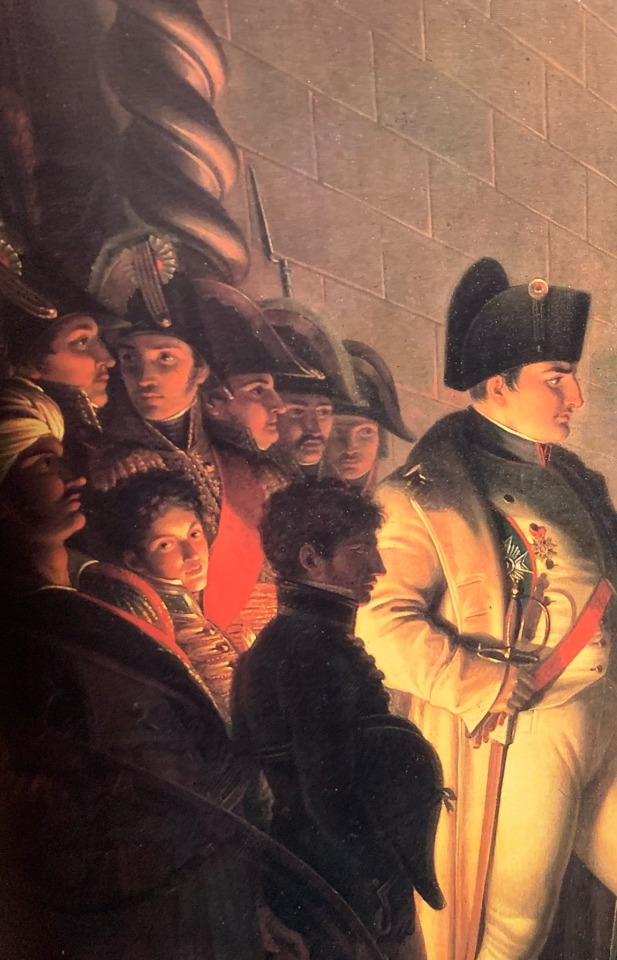

Details under the moonlight in Germany
Painting: The Oath of the Saxons to Napoleon after the Battle of Jena, October 15, 1806. By Pietro Benvenuti (1769-1844).
Source: L’Histoire de Napoléon par la peinture. Jean Tulard.
#my pics#napoleon looking like a chonky boy here#war of the 4th coalition#Pietro Benvenuti#napoleonic era#napoleon bonaparte#first french empire#french empire#saxony#The Oath of the Saxons to Napoleon after the Battle of Jena#napoleon#19th century#history#france#napoleonic wars#coalition wars#paintings#neoclassical#painting#battle of Jena#Jena#Jean tulard#L’Histoire de Napoléon par la peinture
55 notes
·
View notes
Text
(??/03/23) La confession d’un enfant du siècle de Monsieur DE MUSSET ; je regardais une conférence de l’Institut de France, en différé sur la chaîne YouTube, elle s’intitulait « Napoléon - Légende dorée et légende noire », par Monsieur Jean TULARD de l’Académie française. Ce qui m’a amené à lire MUSSET. Autrement, je n’y voyais aucun intérêt, fut il littéraire. Cet engouement national autour de la figure de l’Empereur je ne l’avais jamais lu nul part auparavant.
Autant je connaissais l’Empire sous les yeux d’un jeune constitutionnaliste (étant étudiant en droit), sous les yeux d’un Républicain (ayant fait le collège et le lycée en France), sous les yeux des défenseurs des droits humains, sous les yeux de la contre Histoire (GUILLEMIN), en somme, sous les yeux des sciences humaines, du juridique, au politique, du droit à la sociologie, autant l’Empire des yeux d’un jeune romantique (MUSSET), jamais. Quel choc cela ne m’a-t’il pas fait.
Du reste, Octave ne m’intéresse pas encore, les seules ruptures amoureuses que je connaisse : Esther et Lucien (Splendeurs et Misères des courtisanes), Elvire et Raphaël (Raphaël). L’une et l’autre seront causées par la mort de l’être aimé. Déchirant. ELP.
youtube
0 notes
Text
Help for information about of Germaine Stael
Good evening, everyone. Today, once again, I'm asking for your help regarding a historical figure about whom I don't have much knowledge: Germaine de Stael.
She's often described as one of the principal and most important opponent of Napoleon ( a lot in the media), but I get the impression that she was primarily a « salon opponent », if you'll pardon the expression (especially when compared to figures like Prieur de la Marne, Sanité Belair, Jean-Baptiste-Antoine Lefranc, and what they endured or suffered under repression). Perhaps my biases stem from her father, who adopted a false friend of the people stance that Marat rightfully denounced.
The problem is that my only source is Jean Tulard, who is a historian known to be partial to Napoleon (he claims that Madame de Staël offered her services to the Emperor in exchange for two million francs). It’s not a problem to be partisan, I always think that objectivity in history can’t exist, you can only try to be objective, but I wish more views of other historians. Frankly, I don't know much (if anything—I was more focused on the banker and former finance minister Necker than her ), so I invite anyone knowledgeable on the subject to help me on Madame de Staël and to point me towards good sources about her
5 notes
·
View notes
Photo

Lot de 4 livres de cinéma Ce lot en état d'usage est composé du dictionnaire du cinéma en 2 tomes (Jean Tulard ) : les réalisateurs et les acteurs (1991-92) Et 2 tomes du guide des films 1895-1995 Edition Bouquin Robert Laffont Ideal pour les passionnés et cinéphiles #librairiemelodieensoussol #melodieensoussol #oiseaumortvintage #libraire #librairie #librairiemarseille #librairieparis #librairieindependante #librairieenligne #librairiedoccasion #livresdoccasion #bookstagram #booklover #jeantulard https://www.instagram.com/p/Cow8HEZMogo/?igshid=NGJjMDIxMWI=
#librairiemelodieensoussol#melodieensoussol#oiseaumortvintage#libraire#librairie#librairiemarseille#librairieparis#librairieindependante#librairieenligne#librairiedoccasion#livresdoccasion#bookstagram#booklover#jeantulard
0 notes
Note
Thanks for the interesting review! 💖 I'll have to read the book again now.
That a Napoleon fanboy like Andrew Roberts is a 110% conservative and of the authoritarian "law & order" type, does not really come as a surprise, does it? I understand so is Thierry Lentz on the French side. (And who was that crazy Russian historian who killed his girlfriend? Sokolov?)
Something good about the book: it really covers various aspects of Napoleon's life, and Roberts quotes plenty of sources, which makes it easy to check these primary sources yourself. Which you should do, plenty of them are available online.
Maybe a book with a different approach to the same subject: Jean Tulard, "Napoleon - The Myth of the Saviour"
Can't really add more, I don't have the "tools" for a similarly eloquent approach as the one above.
what's wrong with A. Roberts' Naps bio? D: asking because I bought it according to many suggestions stating it was "the one"...

Just blogging this ask for now, as I will answer you in depth later. This pretty much sums up everything wrong with Roberts though, and I’m trying to construct a reply that isn’t full of f-bombs.
If anyone else also wants to reblog and answer the anon, go for it.
36 notes
·
View notes
Text

On a beaucoup étudié la Révolution, moins la Contre-Révolution. Pourtant, très tôt, la Révolution a trouvé en face d'elle nombre d'adversaires. La Contre-Révolution ne se résume pas aux Chouans. Diverse dans son inspiration, ses objectifs, ses assises sociales, sa presse, sa localisation géographique, ses réseaux, ses complots, ses combats, elle n'est pas facile à saisir dans toutes ses ramifications. Jean Tulard, aidé de spécialistes incontestés, a su relever le défi de faire entendre les idées souvent caricaturées ou méprisées de cette nébuleuse contre-révolutionnaire, plus variée qu'on ne le pense. Y sont posés les jalons de cette histoire, disséquées les origines, les composantes, les doctrines, les actes et la postérité et proposés des portraits de figures contre-révolutionnaires qui méritaient d'être redécouvertes pour appréhender dans sa totalité l'événement révolutionnaire.
3 notes
·
View notes
